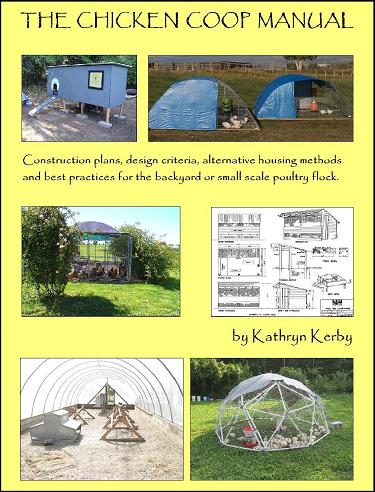|
Search this site for keywords or topics..... | ||

Custom Search
| ||
Hydroponics
It may seem strange that we'd be using hydroponics on the farm, since we already have access to good land, good soil, equipment and know-how. Never the less, we have found that some crops don't grow well enough here for our needs, or we need more than can be produced in our cool, damp climate. This approach has helped fill that void for us.
This is a huge topic, and we'd never be able to adequately describe all its facets within just a few pages on our farm website. But these concepts are so valuable, we wanted to share at least some of this information. So below we offer a crash course in the basics. We encourage you to read them at your convenience. We also offer details and experiences from our work here, to give you an idea of what's possible. We hope the summaries below give you some idea of how much potential this approach offers to those trying to grow food either for home or for market.
Overview
Never heard of hydroponics? Or perhaps you thought it was only for the laboratory, the Space Station, Disney World and science fiction? Not so - it's a flexible, cost-effective growing approach in use around the world.Start here to learn about the various components of soilless crop production.
Nutrients
The heart and soul of hydroponics is the use of a nutrient solution to feed the plants. That is how non-nutritious growing media such as sand, gravel, perlite/vermiculite, rockwool and other materials can be used for crop production. We have experimented with both naturally produced and mined nutrient solutions, with a variety of results. Both offer considerable advantages, and disadvantages. We'll be writing up those findings soon. We'll post that information here so check back soon.
Growing Media
Inert growing media is the other crucial part of hydroponics. While the plants can be nourished via the nutrient solution, the roots still need a three dimensional physical structure to anchor into. That structure must do a variety of things - allow for both nutrient exchange and gaseous exchange, allow for easy root penetration yet be solid enough to physically support the plant, and be inexpensive and lightweight enough for practical use. A wide variety of materials have been used for growing media, each with their own advantages and disadvantages. That summary page will provide you an excellent overview of the numerous growing media options.
High Intensity Discharge Lights
While not a requirement, per se, HID lighting is often used for a variety of reasons. If veggie or fodder crops are being grown in challenging conditions, with low light, the HID lighting can ensure adequate photosynthesis. Even for outdoor growing, some environments don't have enought light - either the day is too short (for instance, when growing in winter months), or the available sunlight is insufficiently strong (for instance, when growing near the earth's poles or in forests or amongst mountains). In those circumstances, HID lighting can make the difference between a bountiful crop and a harvest failure.
Not all HID lights are created equal. There are different wattages, different wavelengths, and even different manufacturing methods, each with its appropriate use. They are often not interchangeable. To help growers sort through all the options and choices, we have created a Grow Lights Summary Page, which provides a huge amount of information on the various types of HID lighting, the pro's and con's of each, vendor information, comparative research, and even some educational materials.
Hydroponics for Market Growers
We are so pleased with the growing options that this approach gave us, we wanted to tell all the world about those options. In 2003 we launched a self-published quarterly magazine called Hydroponics for Market Growers. However, it turns out that running a farm and publishing a magazine are both full-time occupations, and we simply didn't have time to do both very well. So we only published HMG for 18 months. But we continue to get requests for back issues. So we are once again offering them for purchase on our new Hydroponics for Market Growers page. Check on that page for a complete list of articles, and issues available for purchase in electronic format.
Greenhouse Production
Hydroponic crops do not need greenhouses, strictly speaking. But many growers use greenhouses, for a variety of reasons. Even conventional growers use greenhouses and hoophouses to provide a layer of protection between their market crops and the outside world. Whether that structure is simply some plastic stretched over PVC hoops, or a 3000 square foot cutting edge controlled atmosphere structure, the fundamentals are very much the same. We've created a new Season Extension section of the website, which includes greenhouse and hoophouse options for both soil-based and soilless growers. Click here for that new information.
Hydroponics Books
We have purchased and used a wide variety of books while we learned about these methods. Some of them were extremely useful, some of them mildly useful, and some of them collect dust. If you're the type who enjoys books and/or wants solid information from acknowledged experts, rather than say-so on some website, check out the books we've listed on our Hydroponic Books page. All of them are excellent resources for you. We've also provided information about each one so that you can decide whether they meet your needs, before you get them.
Our Successful Farming and Ranching Books

We released our very first self-published book. The Chicken Coop Manual in 2014. It is a full color guide to conventional and alternative poultry housing options, including 8 conventional stud construction plans, 12 alternative housing methods, and almost 20 different design features. This book is available on Amazon.com and as a PDF download. Please visit The Chicken Coop Manual page for more information.

Rabbit Colonies: Lessons Learned
We started with rabbits in 2002, and we've been experimenting with colony management ever since. Fast forward to 2017, when I decided to write another book, this time about colony management. The book is chock-full of practical information, and is available from both Amazon and as a PDF download. Please visit the Rabbit Colonies page for more information.
The Pastured Pig Handbook
We are currently working on our next self-published book: The Pastured Pig Handbook. This particular book addresses a profitable, popular and successful hog management approach which sadly is not yet well documented. Our handbook, will cover all the various issues involved with pastured hog management, including case studies of numerous current pastured pig operations. If you have any questions about this book, please Contact Us.